-
Car Reviews
- All reviews
- Midsize SUVs
- Small cars
- Utes
- Small SUVs
- Large SUVs
- Large cars
- Sports SUVs
- Sports cars
- Vans
Latest reviews
- Car News
-
Car Comparisons
Latest comparisons
- Chasing Deals
Ford’s Transit Custom has finally arrived in Australia claiming to bring a step up in both ability and versatility, claims we put to the test over 1000km
You’ve likely seen them on the roads already, the new-generation Ford Transit Custom is arriving in tradie driveways – and parked sideways across others – as this new-generation workhorse gets to work without a fuss.
It’s bigger in some dimensions to increase cargo capacity but smaller than others, such as height, to improve practicality. The interior is smarter and safer but the junior Transit retains the good stuff from the old model like the faithful 2.0-litre turbo-diesel.
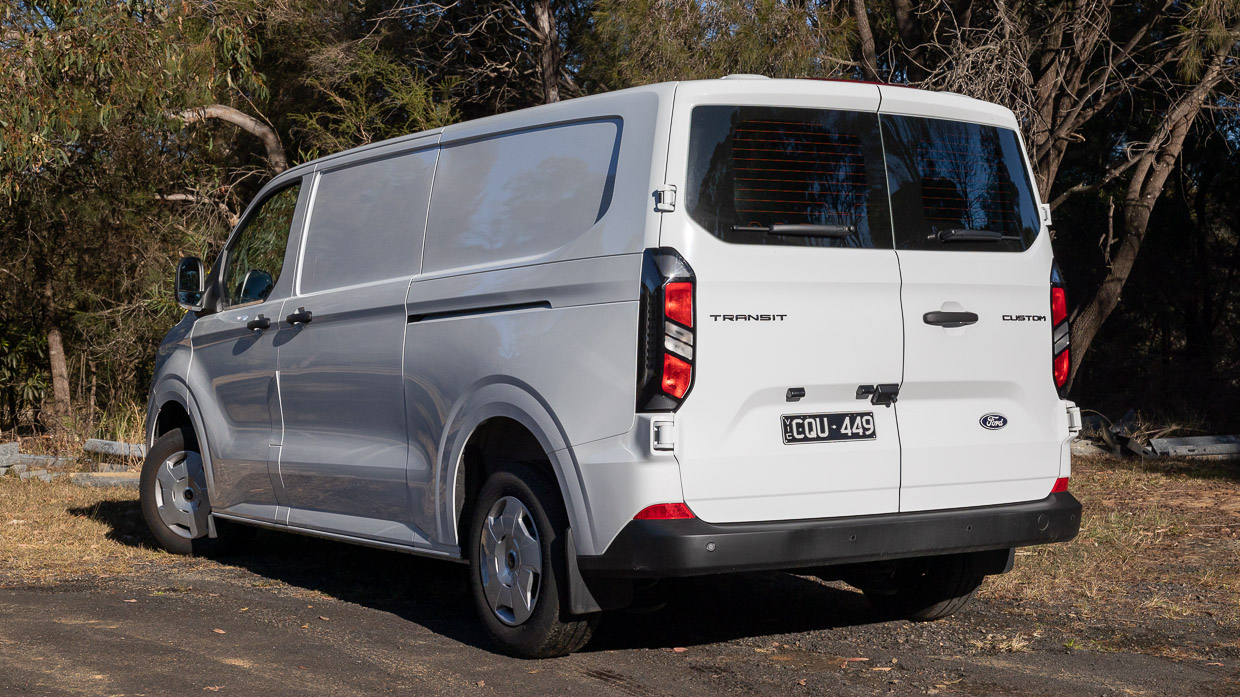
That said, prices are up, and new and shiny doesn’t necessarily mean ‘better’. The base model Trend we have here on test is priced from $56,590, which is only a $600 increase over the equivalent entry point this time last year. Effectively, that’s less than a coat of premium paint.
If barebones and solid fundamentals are all you care about, skip to the next section, but for those craving a little bit more know that there is an upper spec ‘Sport’ in both SWB van and LWB crew cab that should be arriving very soon.
In early 2025, the fully electric E-Transit Custom will come to Australia promising an uncompromised load-carrying capacity over the diesel, a smoother RWD driving experience and a workable driving range of 337km.
As standard, the Transit Custom is fitted with the following features, with the SWB version priced at $56,590 before on-road costs while the as-tested LWB is $57,590.
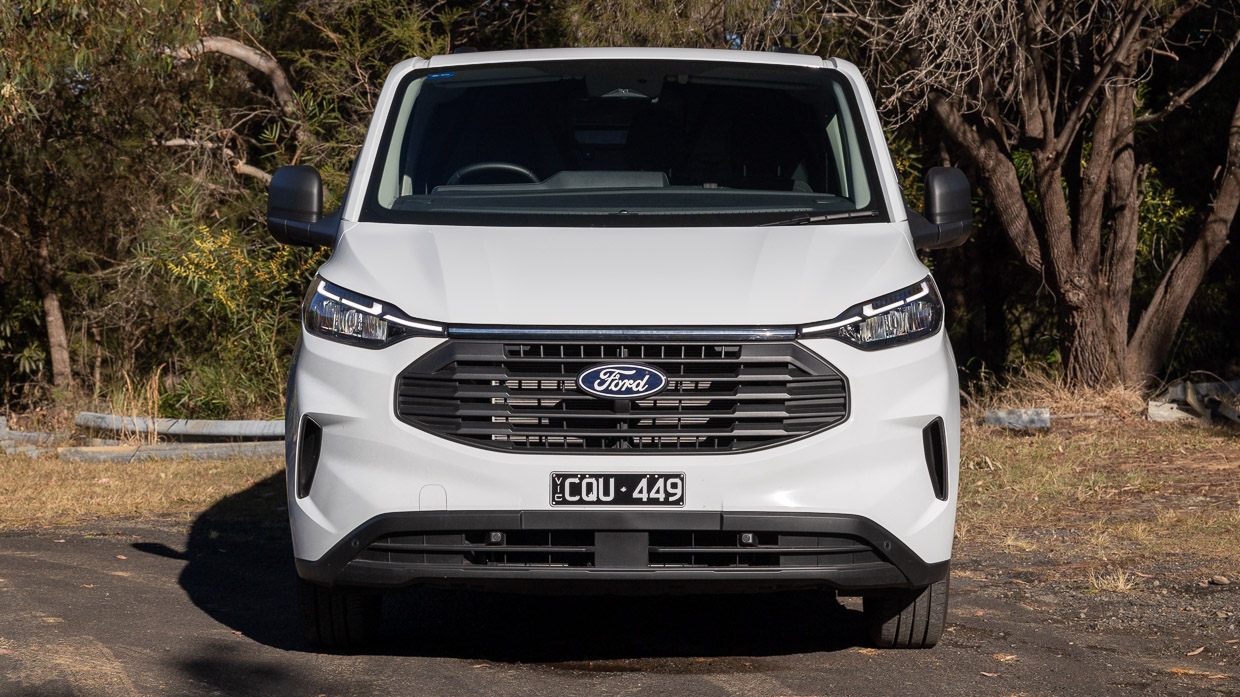
If you find the above list a bit lacking, it’s worth noting the Sport adds features such as keyless entry, full LED headlights and tail-lights along with a 10-way power adjustable driver’s seat, 17-inch alloys – oh, and don’t forget – stripes!
The downside is that the Sport is only available in pure van guise in the SWB version ($59,990) with the LWB restricted to the double-cab or crew cab configuration ($62,990).
It’s often said that automotive journalists only turn their attention to vans when they’re moving house, but I’ve moved house six times in five years so I ask you dear reader: am I reviewing a van to suit my own needs or am I simply very dedicated to cargo vans?
Regardless, I have once again found myself moving house and this time the move was big – my growing family and (heavily) pregnant wife would be packing up our belongings in Sydney and driving a detoured route in convoy to Melbourne.
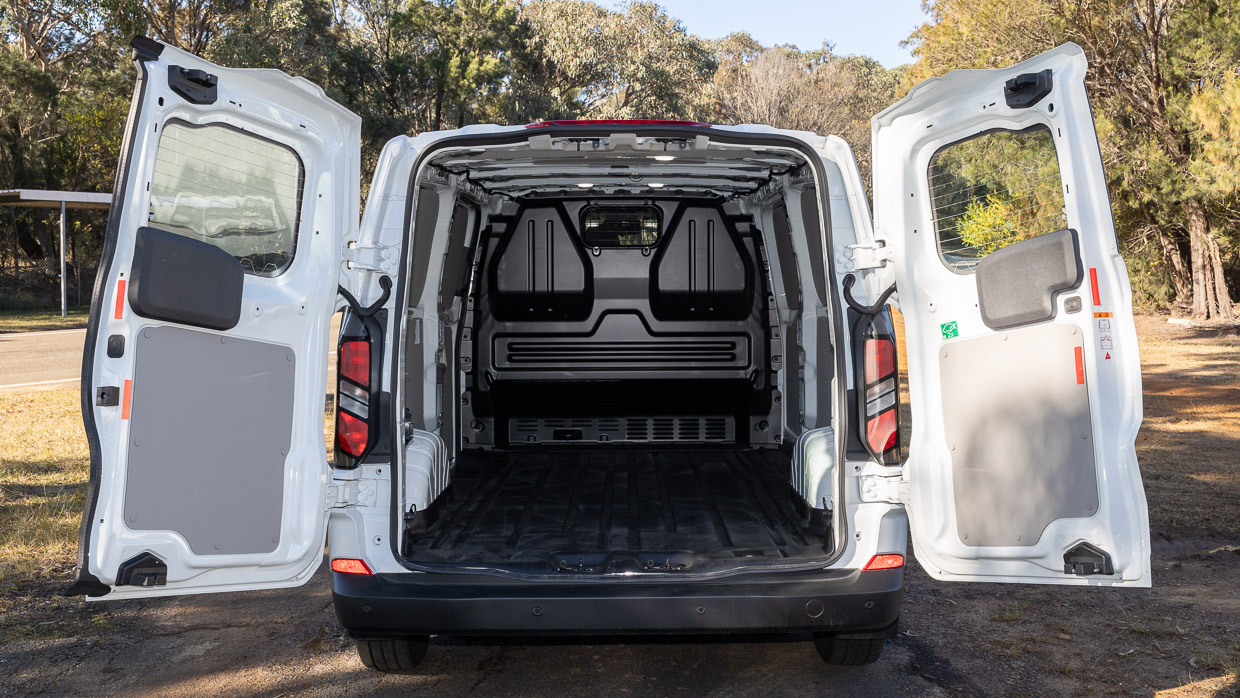
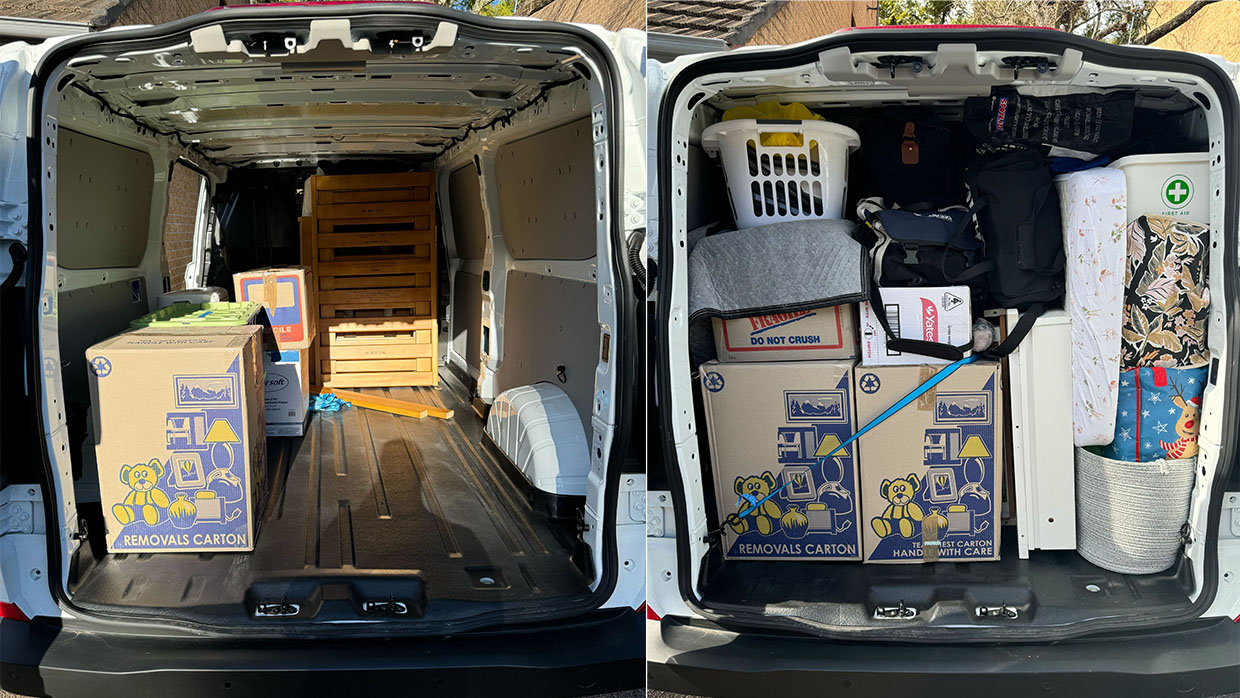
Total distance? Over 1000km. That’s plenty of time to get to know the new Transit Custom, especially after I’d already reviewed the left-hook version in Germany a few months prior.
The bulk of my cargo was loaded into a much larger moving truck but anything especially heavy or essential was loaded into the rear of the Ford; so mini-fridges, bed frames, a weight set, kitchen sets and boxes of tools filled the 6.8 cubic metres of space to its limits.
The cargo space of the LWB is a decent gain over the 5.8 cubic metres afforded over the SWB version, but falls short of the segment-leading LWB Toyota Hiace’s 6.2 measure, or a whopping 9.3 in ‘super’ LWB guise.
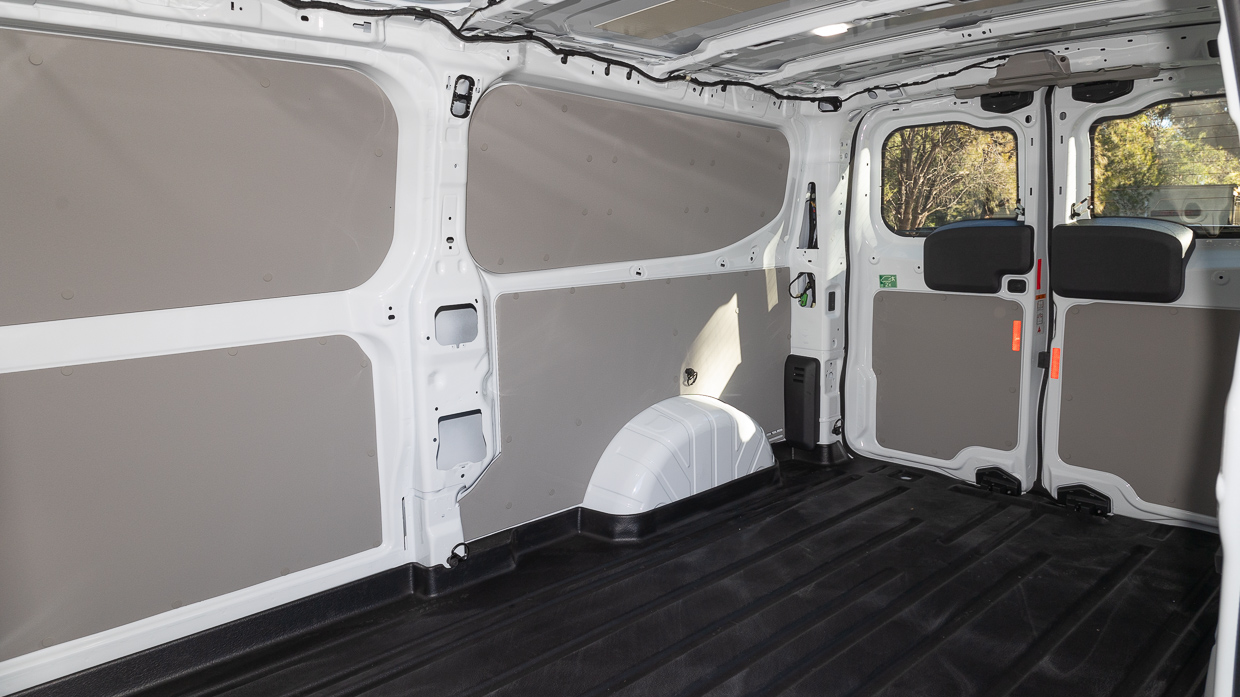
It’s worth noting, though, that this space doesn’t come from nowhere, as the Hiace is a larger vehicle in both configurations than the Transit Custom. We’ll cover the benefit of the Ford’s more compact size in the driving section.
Changes made to the side door design have opened up the aperture to 1030mm, which might see a forklift load a skid-pallet through but not a 1200mm-wide Euro pallet. Still, the opening was massive and allowed me to wrangle all manner of household items without hassle.
There is only one hydraulically assisted door in the Transit Custom but a second can be added for an additional $1000. If you don’t like the barn doors, the liftgate option commands an extra $700.
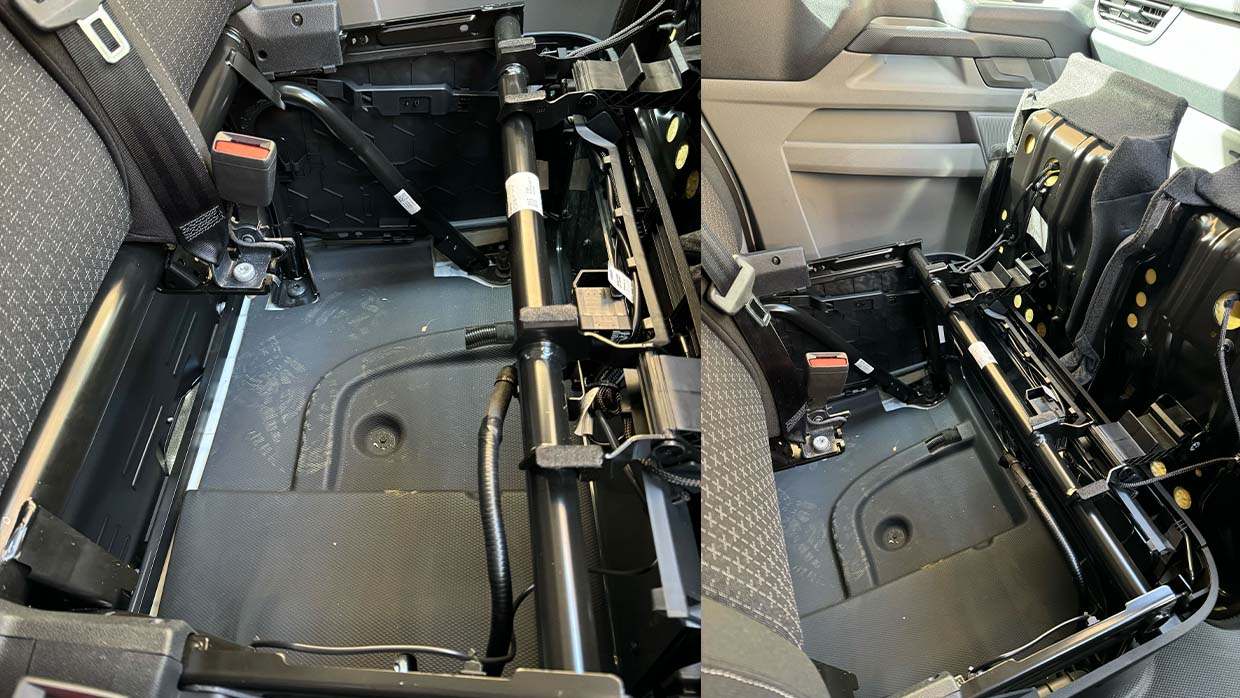
Ford has fitted out the load space with an array of commendably bright LED lights which assisted when working after hours.
In the way of criticism, there isn’t much other than what I’ve already stated. The hull is short inside so the van can scrape under the ‘2.0-metre’ height limit at your local shopping centre car park. The experience wasn’t too kind to my back (I’m 183cm tall) but the opening is wide enough that you should need to be in the back all that often.
Eight tie-down points line the floor of the load area but there are no tie-up points to secure taller items, so a liberal use of blanketing was required, though this was primarily done out of politeness to Ford as there is a good deal of replaceable soft shielding in the load area.
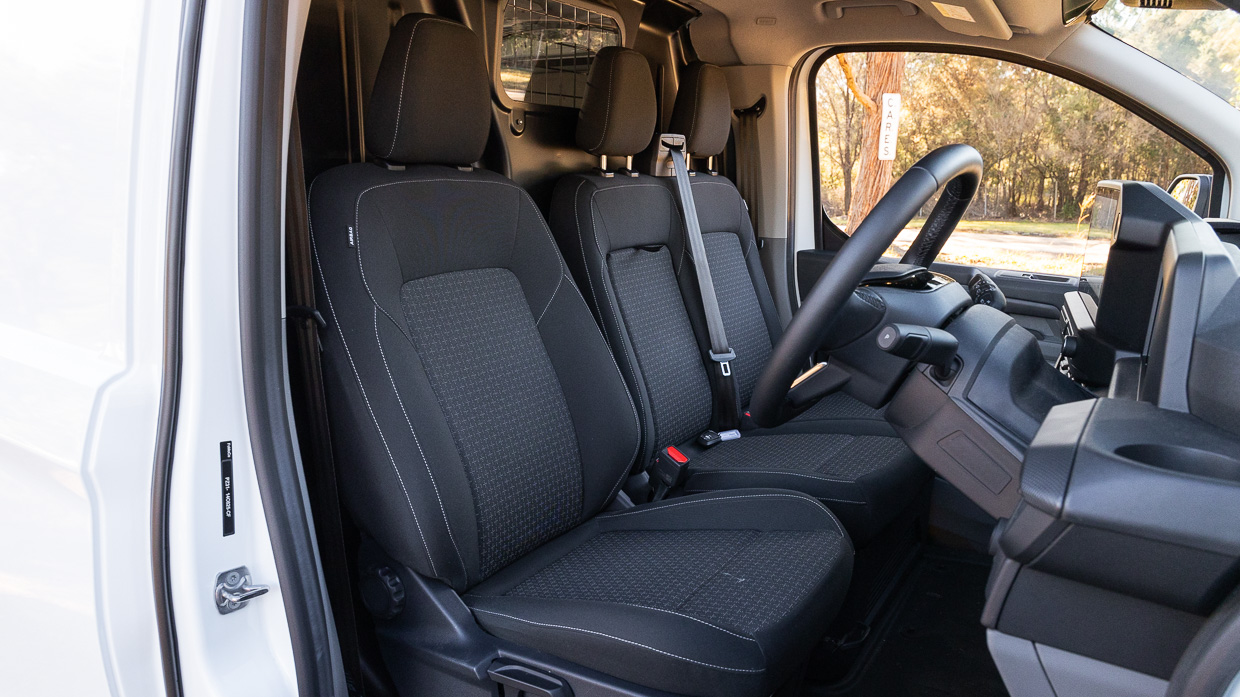
More storage is found up front in the cabin, with a huge bin available under the two passenger seats along with a decent glove box, side doors storage and stowage across the dashboard. No ceiling storage is available in this model but it’s not really needed.
The seats are trimmed in hard-wearing cloth and are reasonably comfortable. After completing around 800km in one day my back was in surprisingly good shape, partly thanks to the heated functionality that I enabled when fatigue started to set in every few hours.
Ford has fitted a huge 13.0-inch multimedia screen on all grades of the Transit Custom and this is the van’s command centre. Climate controls, vehicle settings and of course multimedia all come through here.
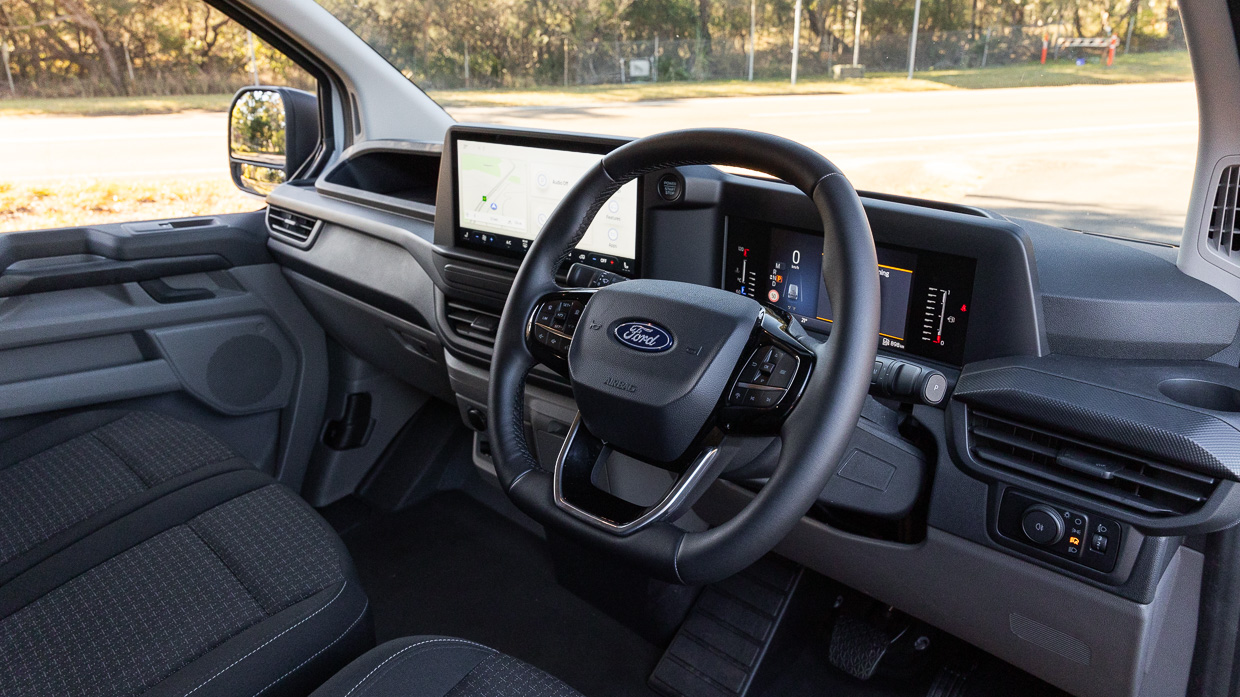
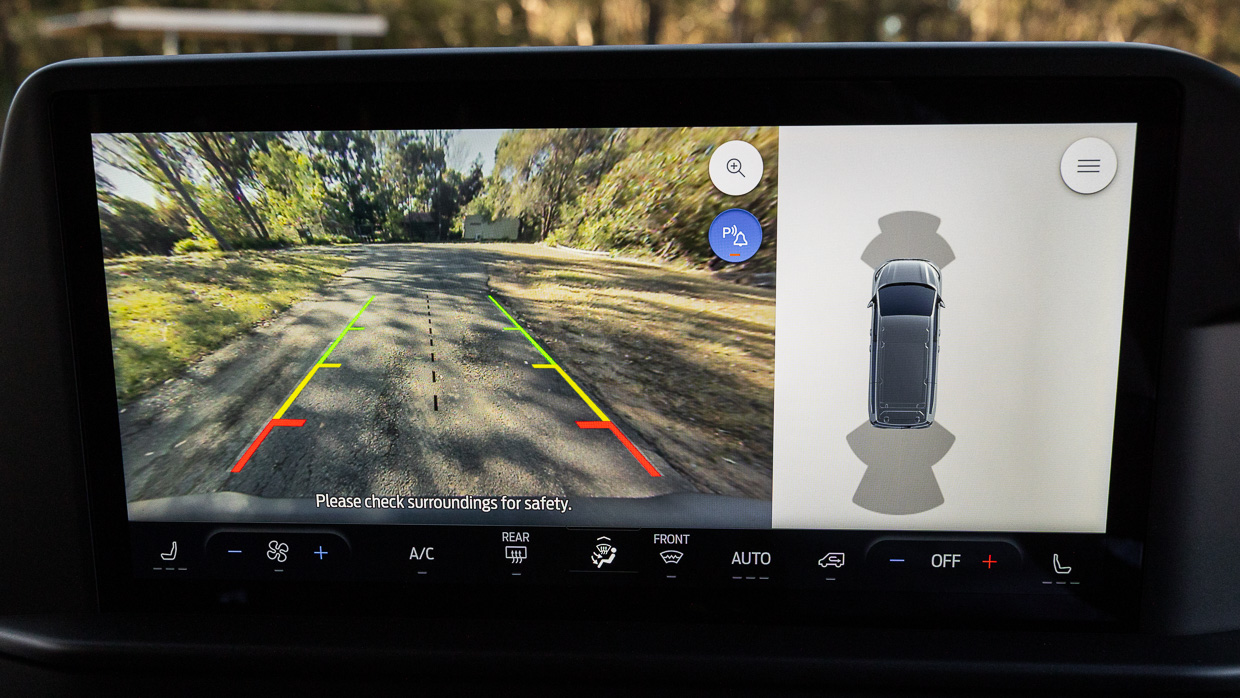
It’s a shame there hasn’t been a row of physical buttons fitted underneath as dirty or gloved hands likely won’t play nicely with the touchscreen interface and there was some noticeable lag at times but for all other purposes, the screen is intuitive and easy to use.
Delivery workers will also appreciate the addition of wireless Apple CarPlay and Android Auto allowing the driver to keep their phone in their pocket instead of fussing about with cables.
Tragically, Ford has yet to start manufacturing the Transit Custom with the fantastic Mobile Office pack, which allows the steering wheel to be folded into either a laptop stand to work on or a flat tray table for completing paperwork or eating lunch.
With the driver on board, the total weight of my long-haul cargo was somewhere in the vicinity of 650kg, which left plenty of bandwidth in the 1209kg payload maximum.
Downright sprightly unladen, the 125kW/390Nm 2.0-litre turbo-diesel four-cylinder pulls confidently when under load, though it’s down on outputs when compared to rivals like the Hyundai Staria Load (130kW/430Nm) and Toyota Hiace (130kW/450Nm).
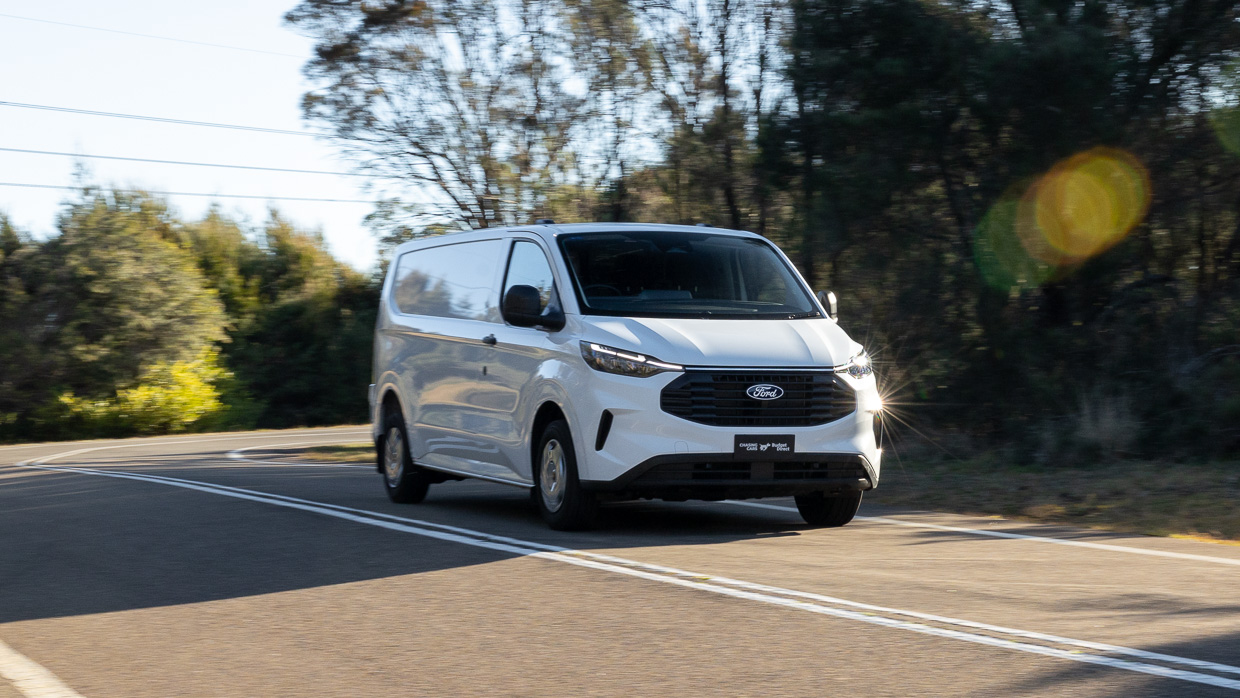
The grunt was certainly competent for the job at hand, but I suspect that if the full 2500kg braked towing capacity was utilised the driver would be left wanting for more.
Our journey across the border saw us travel through peak-hour city traffic, fast-flowing but pitted roads in the rural areas and long dull stints on the highway. The Transit Custom performed admirably, or even better, in all circumstances.
With torque focused lower in the rev range the Transit Custom felt quick off the mark in town. Its short overhangs matched with solid visibility, a brilliant split-mirror design and good quality reversing camera also made parking very straightforward.
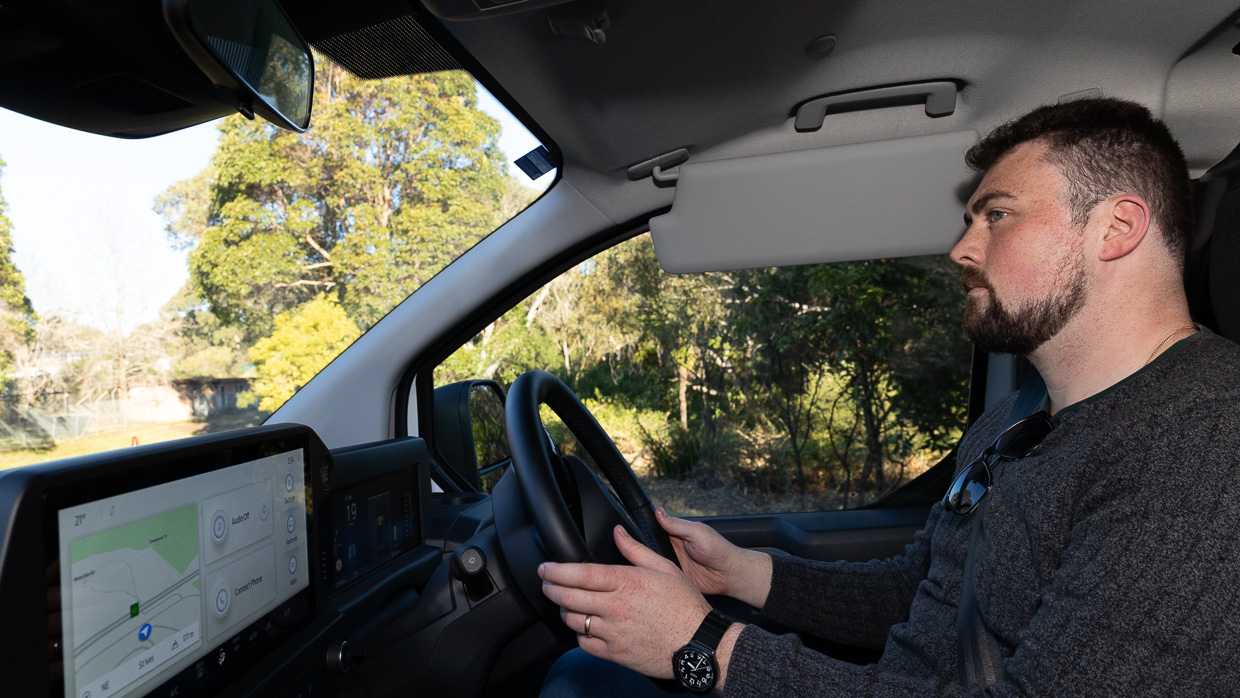
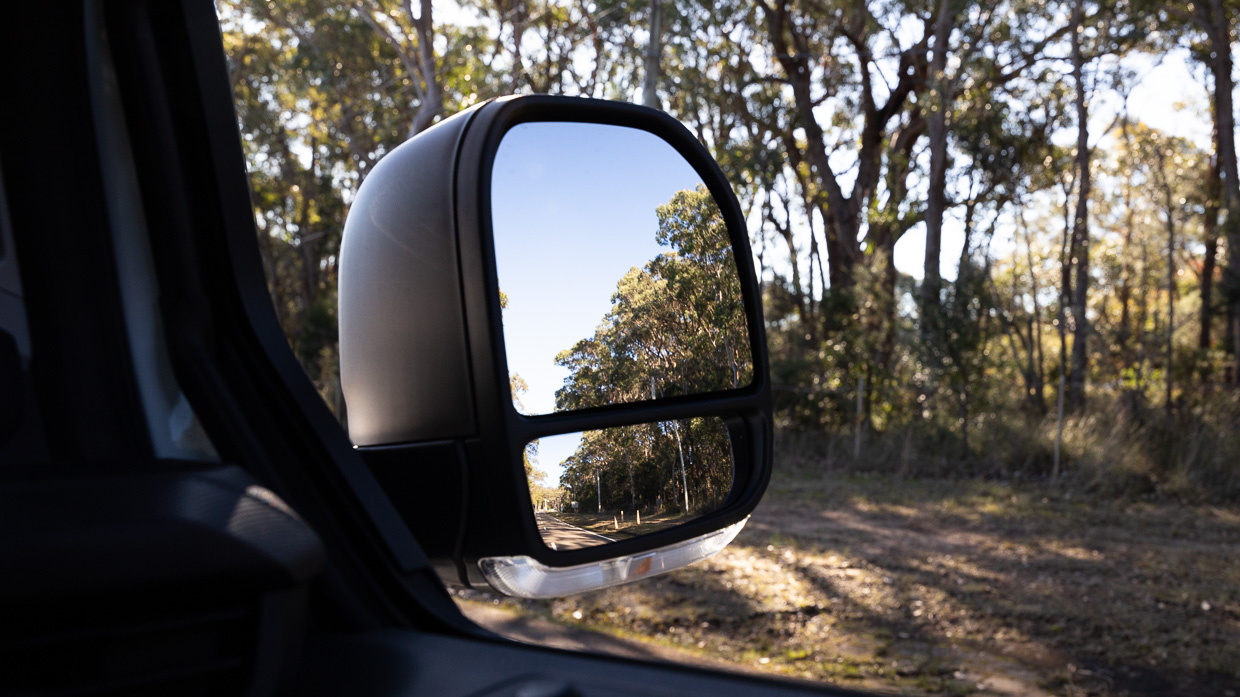
Smart little bits of design, like having a sun visor that spans the entire length of the window to block the evening sun, are also very welcome.
The 5450mm length also made it quite wieldy for the size, though the turning circle of 12.8 metres isn’t amazing for the class.
At higher speeds, the new independent rear suspension proves its worth, with minimal sag under load there was plenty of wheel travel left to soak up bumps on country roads providing a feeling of confidence as a driver.
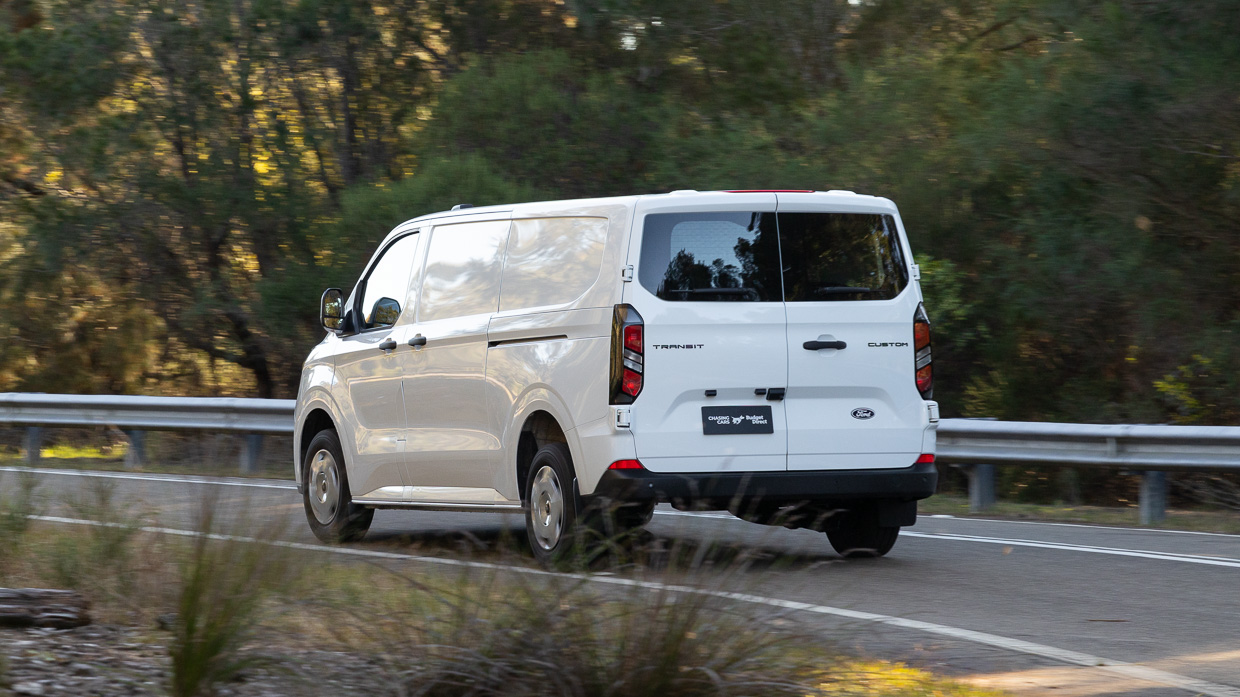
It’s truly remarkable how far vans have come in terms of driving dynamics and the Transit Custom is one such example. The same can be said for general refinement, and the lack of cabin noise is fairly impressive for a diesel van.
Solid-axle vans are slowly becoming a thing of the past and for good reason; there is so much more bandwidth in the chassis to deal with unexpected moments like a roo jumping out on the highway or a washed-out pot-hole exposed after a rainy night.
Compared to its all-electric version, the E-Transit Custom, the diesel is more limited in terms of grip with the front tyres tasked with both propulsion and steering, while the EV features a more traditional and effective rear-wheel-drive setup that balances the tasks between both ends.
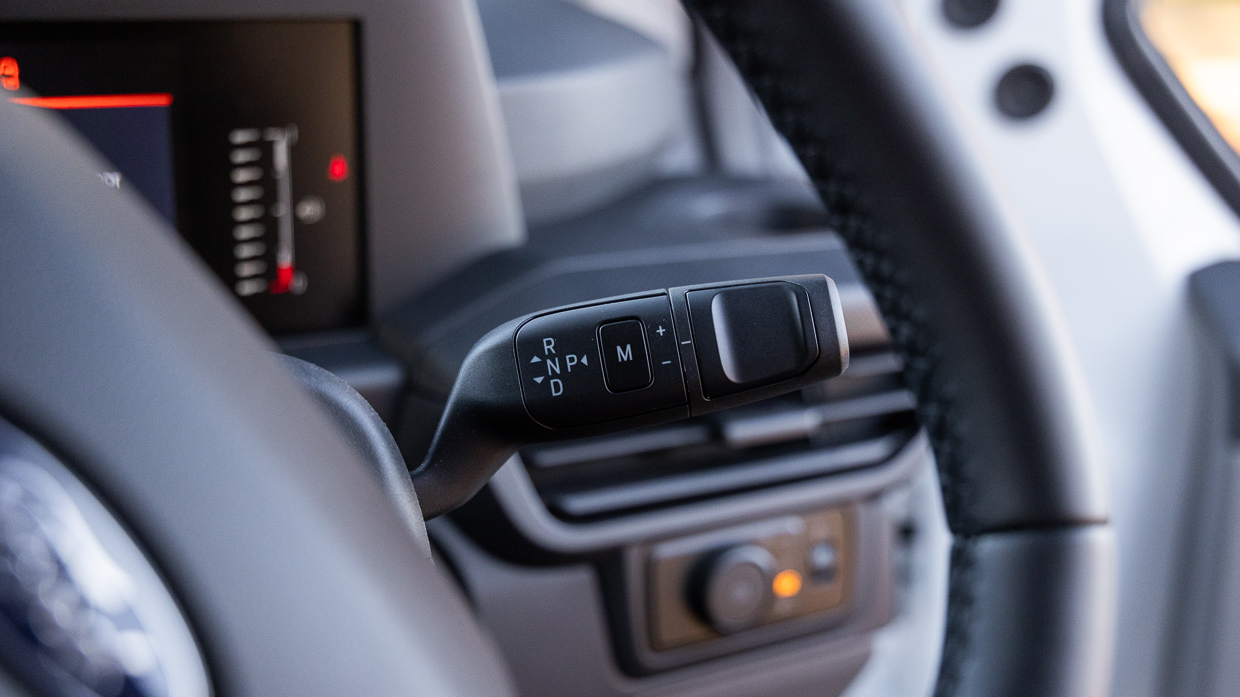
The eight-speed automatic transmission has a tendency to hang onto higher gears for too long when navigating hilly terrain and the method to manually take over shifting with the column shifter is a bit clumsy, so better calibration or even a ‘sport’ mode could be of value here.
Finally, night driving revealed less than ideal brightness from the standard low beams and could be worth the upgrade to the Sport with its LED bulbs if you plan to navigate rural areas at night.
No ANCAP rating is currently available at the time of writing this review though this is likely to change in the future with many fleet buyers holding the five-star gong in high regard.
The chance of it being involved in a crash in the first place is likely significantly less than its rivals, however, with ANCAP recently awarding the Transit Custom a ‘Platinum’ rating in its Commercial Van Safety Comparison.
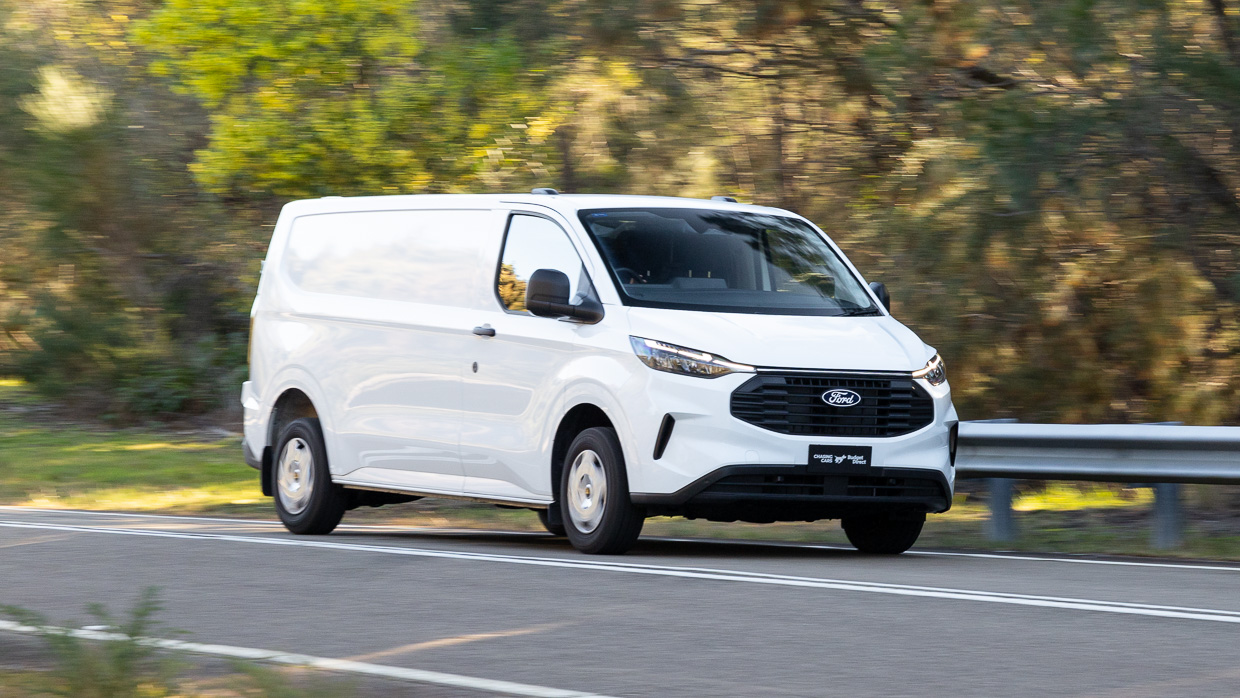
The test, introduced in 2022, assesses the effectiveness of driver assistance safety systems in vans like autonomous emergency braking (AEB), lane support systems, speed assistance systems and occupant detection systems.
Setting an all-time performance benchmark of 96 percent, the Transit Custom bested more expensive rivals like the Mercedes-Benz Vito and outperformed cheaper rivals like the LDV Deliver 9 which was elevated to ‘Gold’ status after a recent update.
Our experience largely mirrored that of ANCAP, with the adaptive cruise control and lane keep assistance technology performing well in the real world, with few unnecessary beeps and bongs.

I did get a fatigue warning sound off after just five minutes at the wheel but having spent the previous night caring for a sick toddler, the Transit was probably onto something…
In terms of safety equipment the Transit Custom Trend features the following:
Servicing intervals are a gracious 30,000km or 12 months, with Ford capping the price of the first four years/120,000kms at $499 a visit, or $1996 over the entire period. These prices are up slightly over the old model which capped the cost at $399 per visit.
Those who don’t get on well with mechanics but like the sound of the E-Transit Custom may want to wait for the E-Transit Custom, which is offered overseas with two-year, unlimited-kilometre service intervals – and we see no reason why Ford couldn’t offer that here as well.
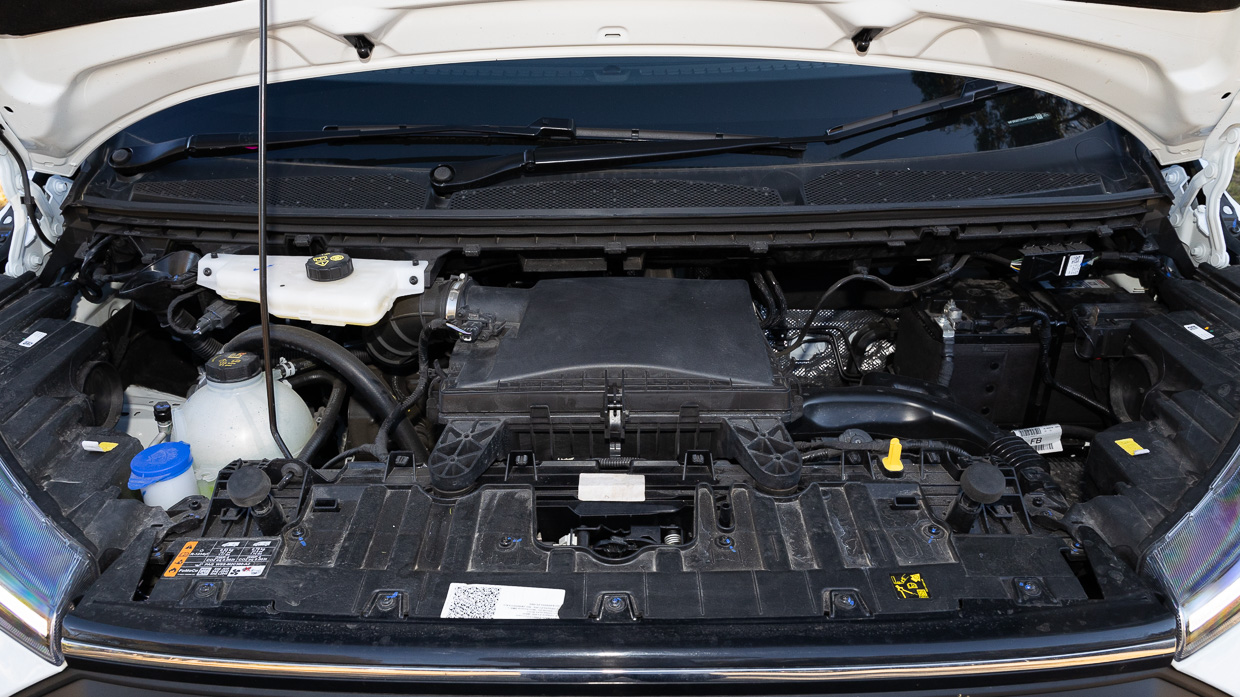
The Transit Custom has a combined fuel consumption claim of 8.0L/100km which we managed to best over our 1000km of testing, most of which was fully laden.
The Transit Custom is covered by Ford’s five-year, unlimited-kilometre warranty, which is a bit more limited when compared to Chinese rivals.
The Ford Transit Custom continues a wider trend we’ve seen across the commercial van space by being a safer, easier to drive and smarter vehicle that inches a little closer to passenger vehicle-level refinement.
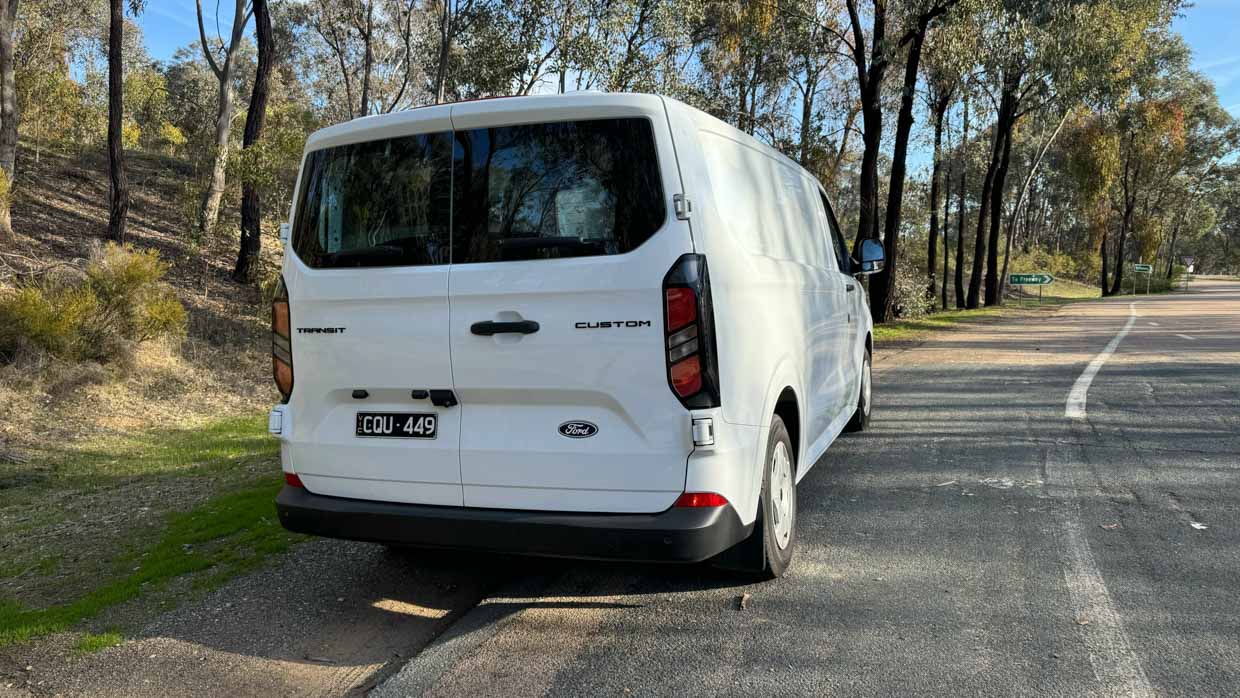
By ditching the previous solid-axle setup some might fear that the more posh independent setup would compromise load-carrying capacity but that’s not the case here and with Ford setting new benchmarks when it comes to the tuning of its safety systems, this is a van worth putting on your shortlist.
The best is yet to come with the E-Transit Custom due in the coming months but the fully electric version won’t be the best fit for everyone and it’s very unlikely to start at circa-$50K, making it a hard bargain when the base diesel-Trend ticks so many boxes.
Key specs (as tested)
About Chasing cars
Chasing Cars reviews are 100% independent.
Because we are powered by Budget Direct Insurance, we don’t receive advertising or sales revenue from car manufacturers.
We’re truly independent – giving you Australia’s best car reviews.
The estimate provided does not take into account your personal circumstances but is intended to give a general indication of the cost of insurance, in order to obtain a complete quote, please visit www.budgetdirect.com.au. Estimate includes 15%^ online discount.
^Conditions Apply
Budget Direct Insurance arranged by Auto & General Services Pty Ltd ACN 003 617 909(AGS) AFSL 241 411, for and on behalf of the insurer, Auto & General Insurance Company Limited(ABN 42 111 586 353, AFSL 285 571).Because we don’t know your financial needs, we can’t advise you if this insurance will suit you. You should consider your needs and the Product Disclosure Statement before making a decision to buy insurance. Terms and conditions apply.
Indicative quote based on assumptions including postcode , 40 year old male with no offences, licence suspensions or claims in the last 5 years, a NCD Rating 1 and no younger drivers listed. White car, driven up to 10,000kms a year, unfinanced, with no modifications, factory options and/or non-standard accessories, private use only and garaged at night.
^Online Discounts Terms & Conditions
1. Discounts apply to the premium paid for a new Budget Direct Gold Comprehensive Car Insurance, Third Party Property Only or Third Party Property, Fire & Theft Insurance policy initiated online on or after 29 March 2017. Discounts do not apply to optional Roadside Assistance.
2. Discounts do not apply to any renewal offer of insurance.
3. Discounts only apply to the insurance portion of the premium. Discounts are applied before government charges, taxes, levies and fees, including instalment processing fees (as applicable). The full extent of discounts may therefore be impacted.
4. We reserve the right to change the offer without notice.